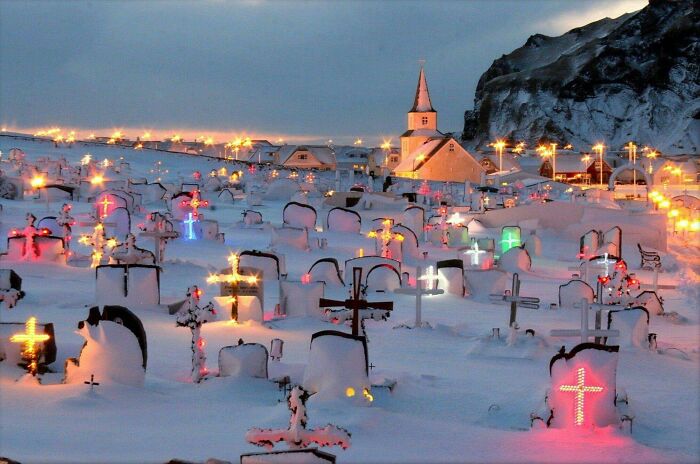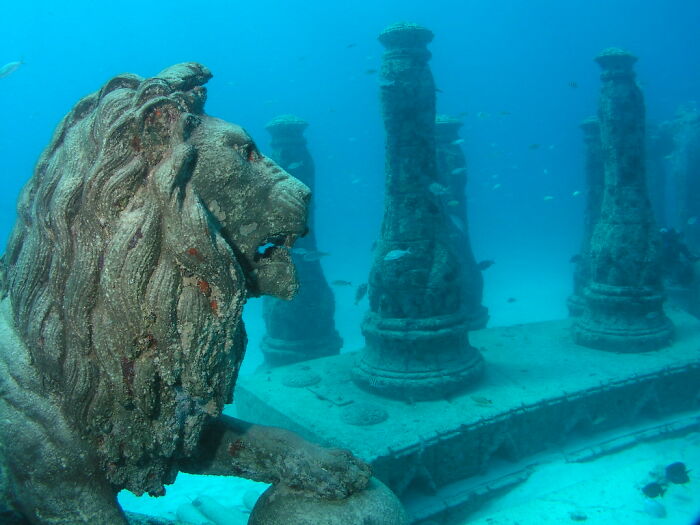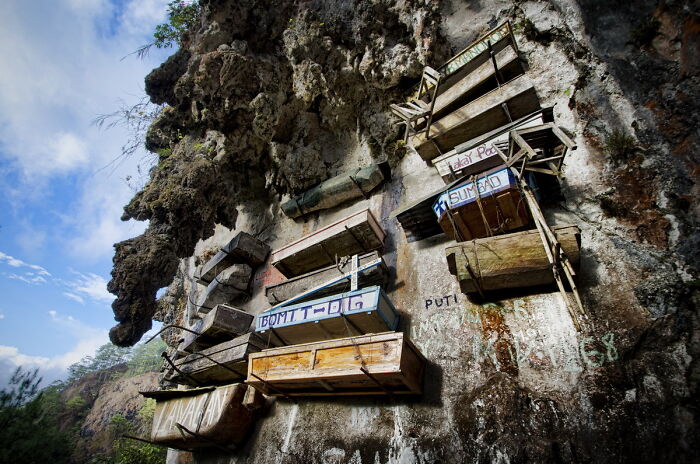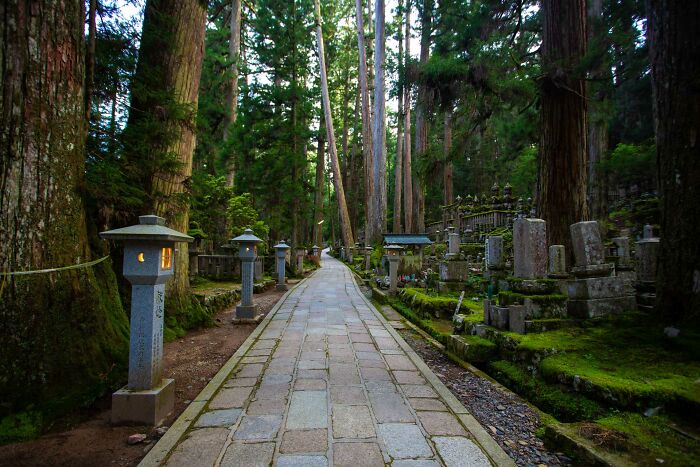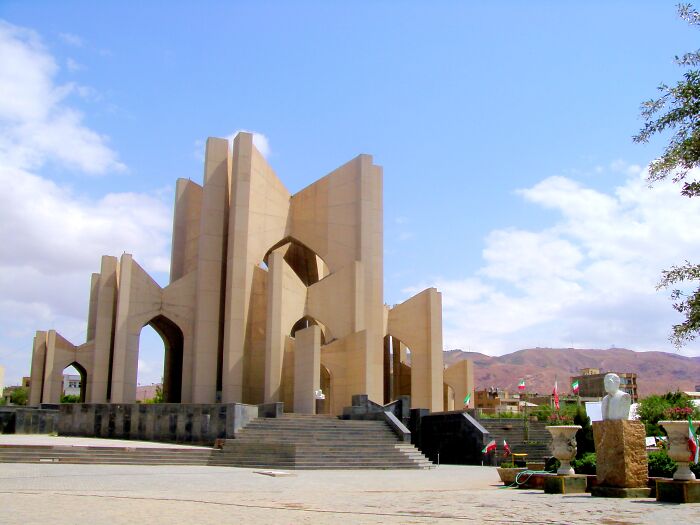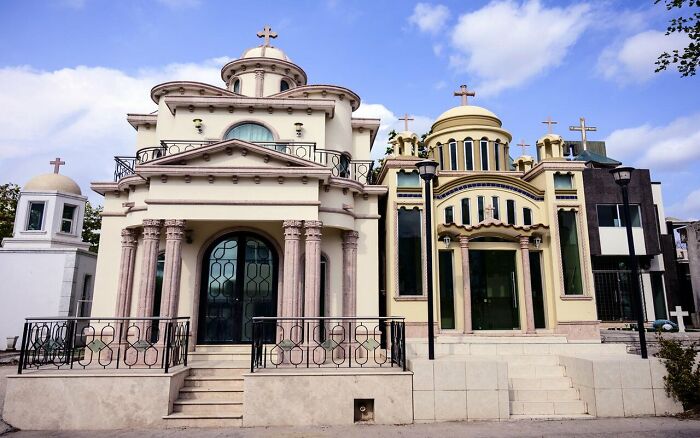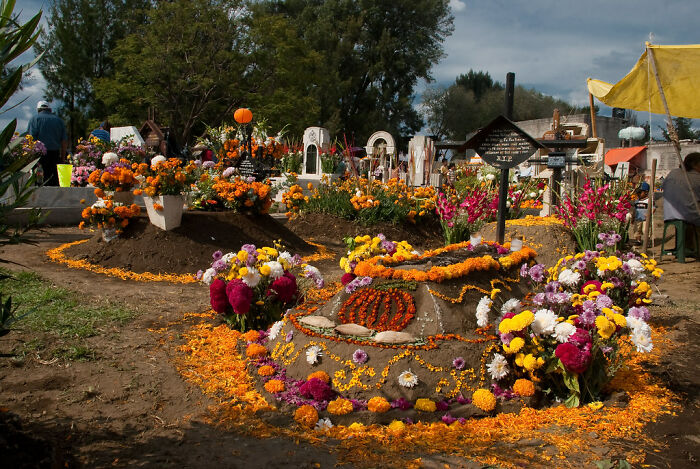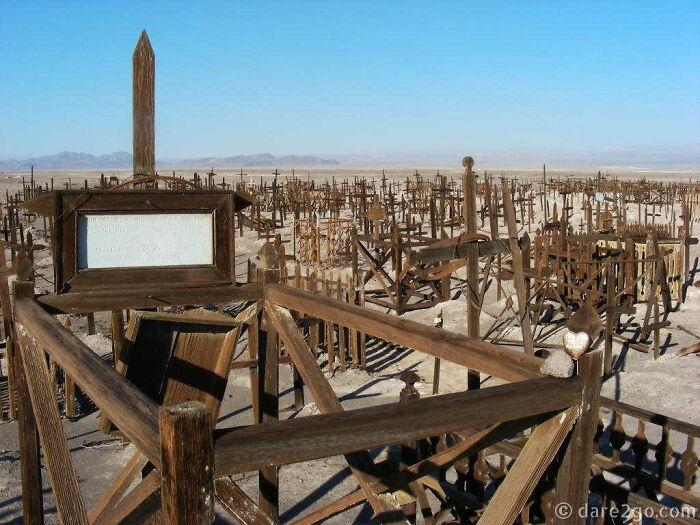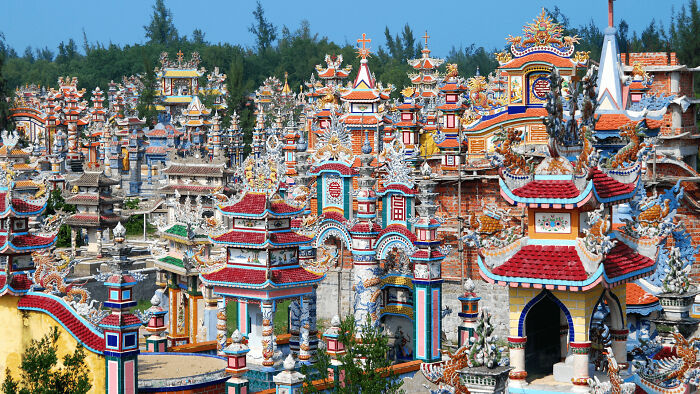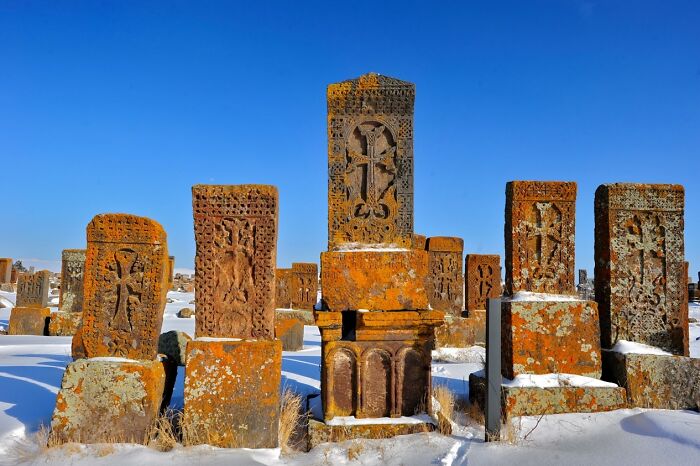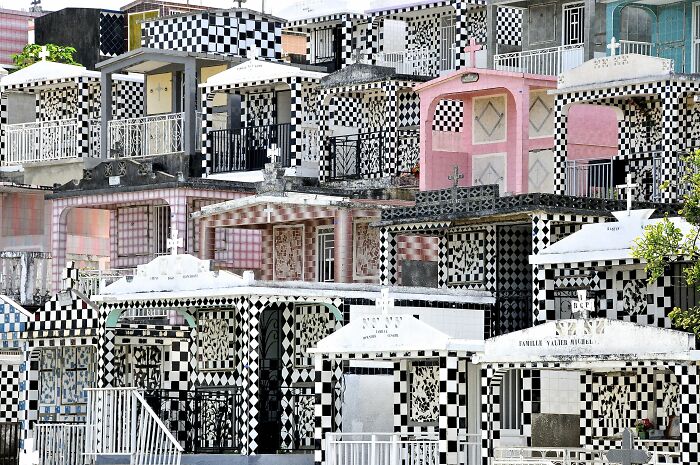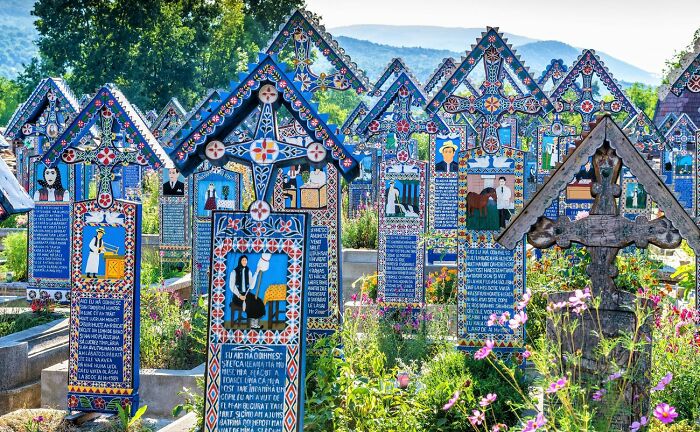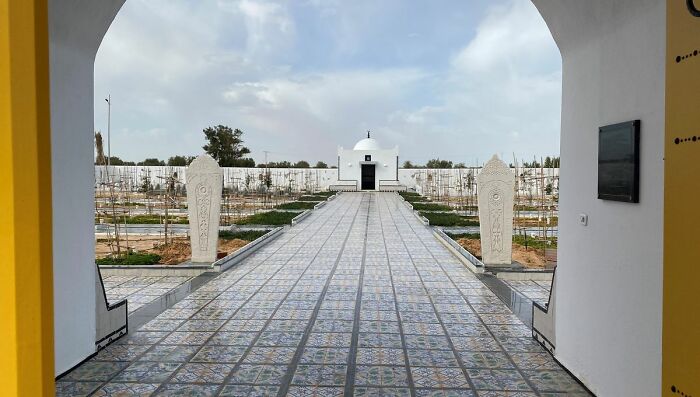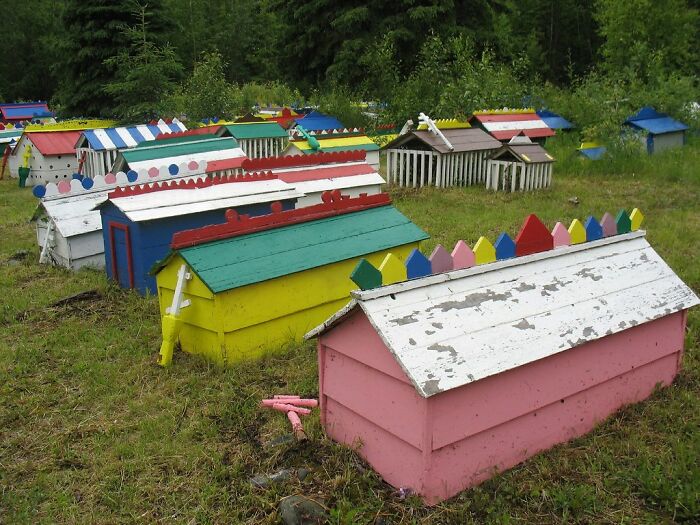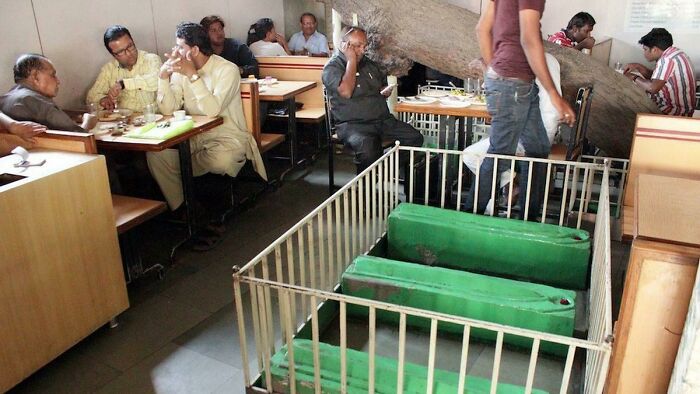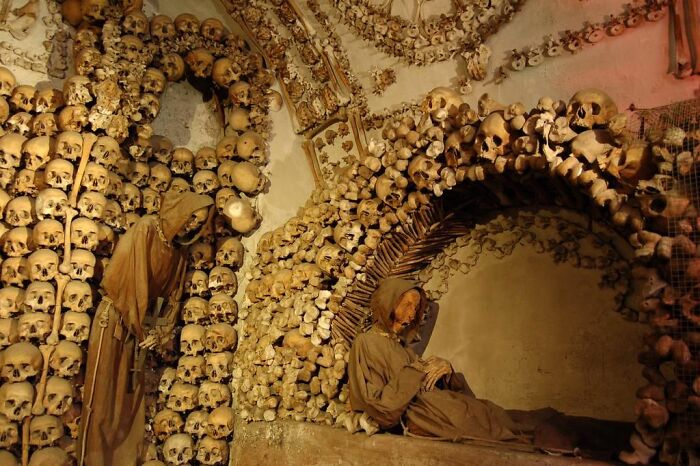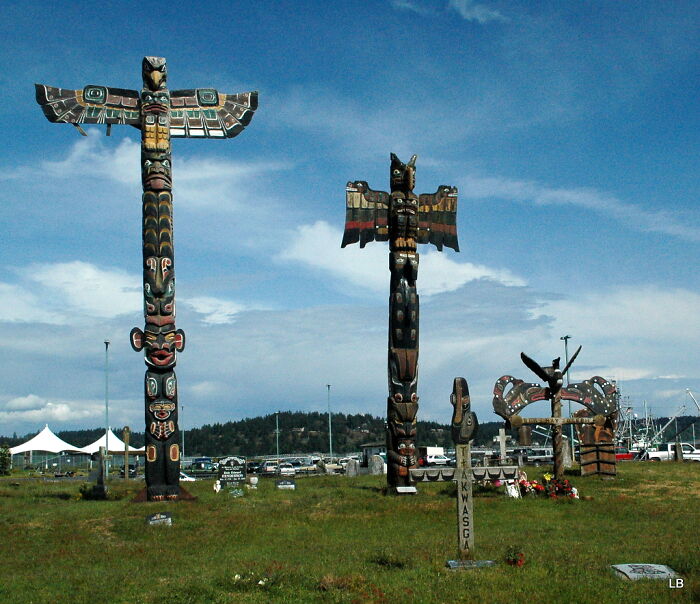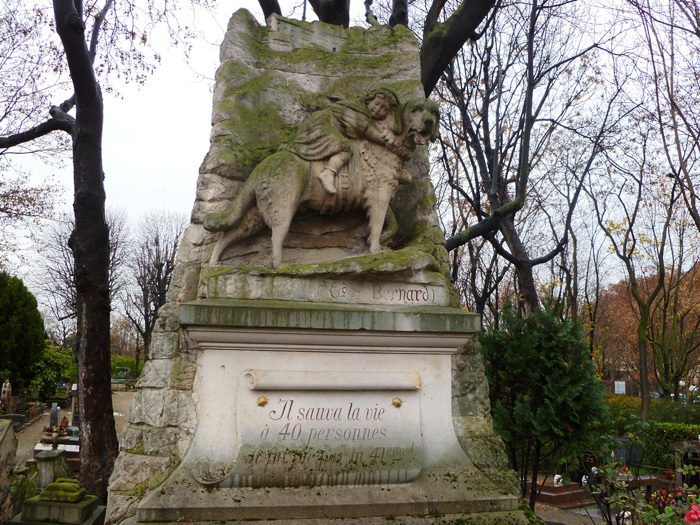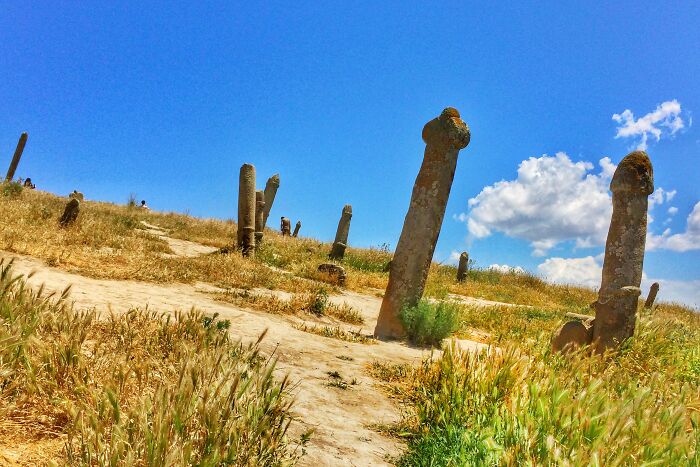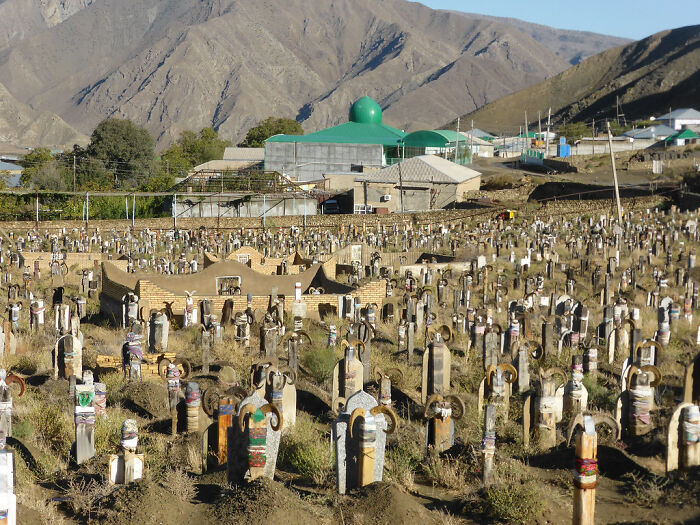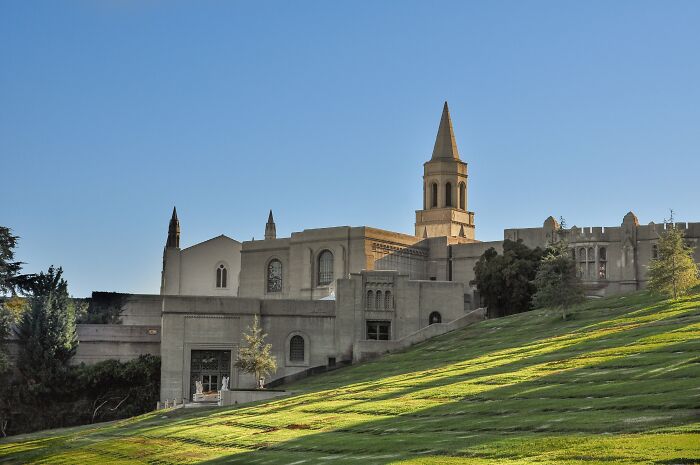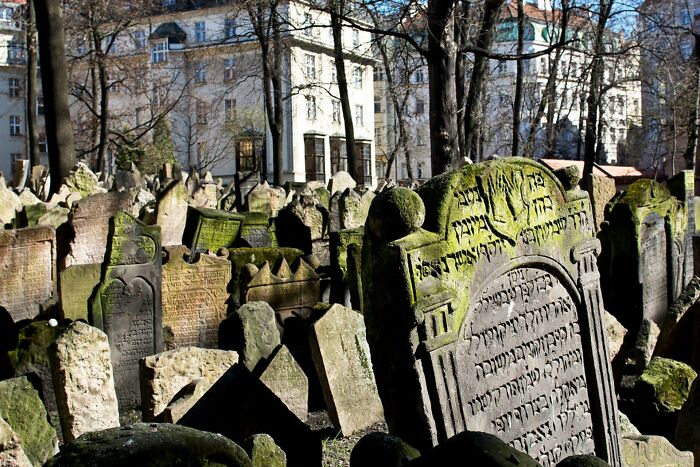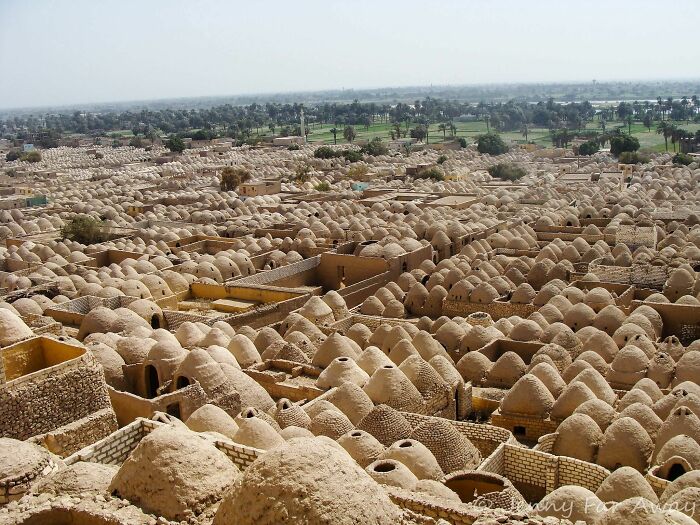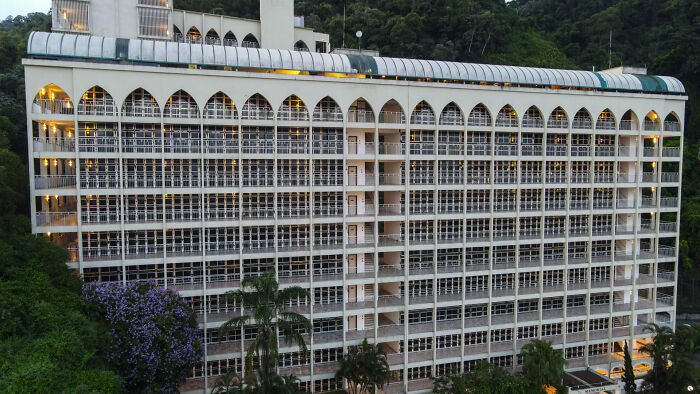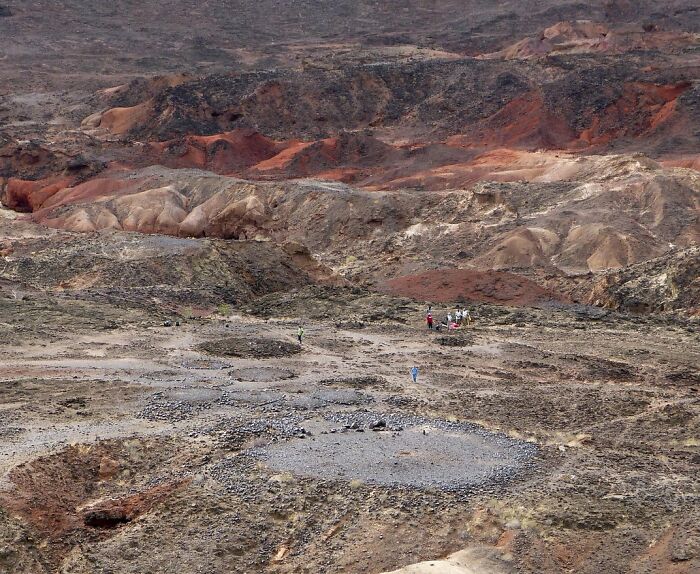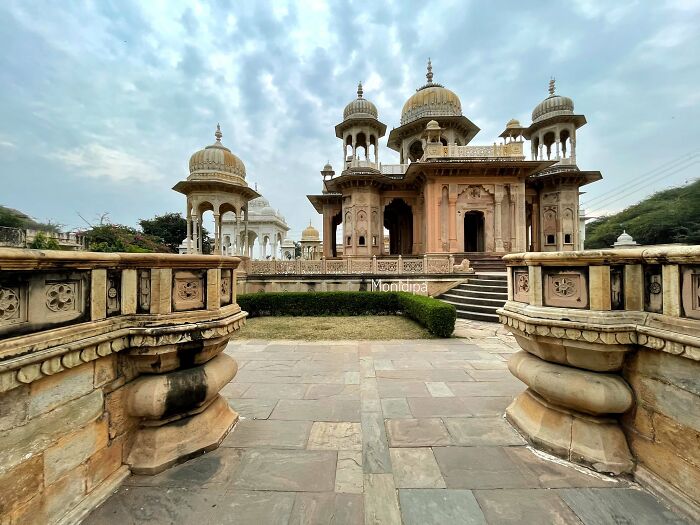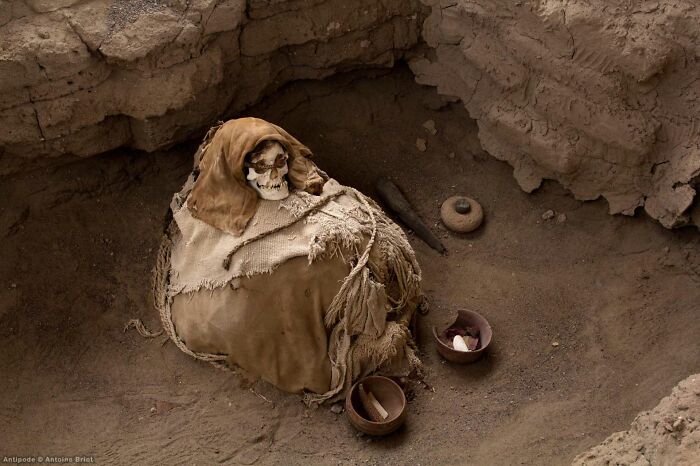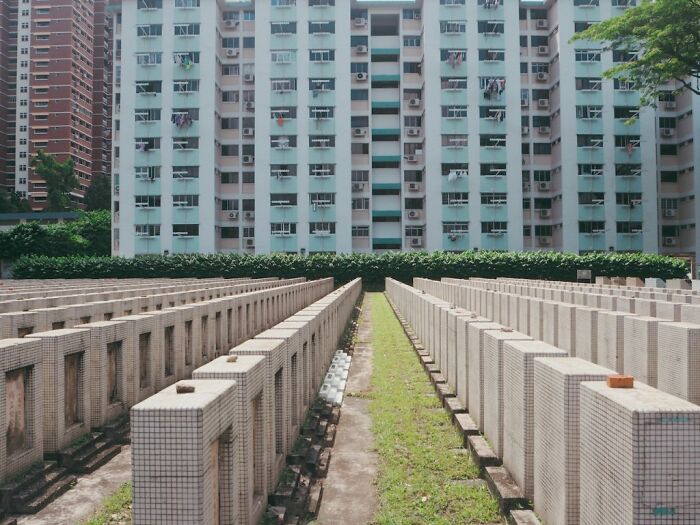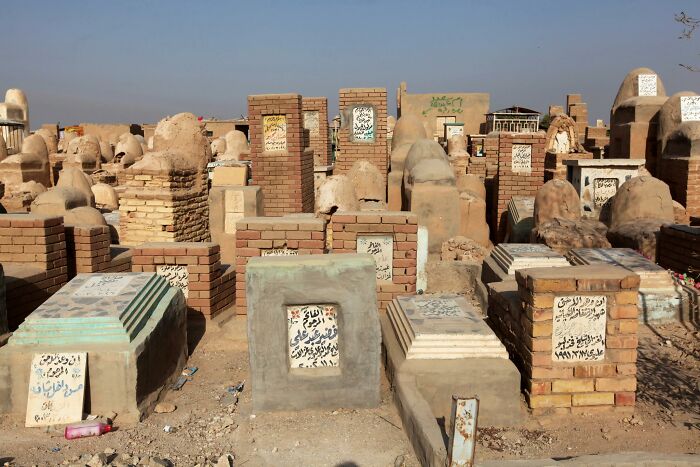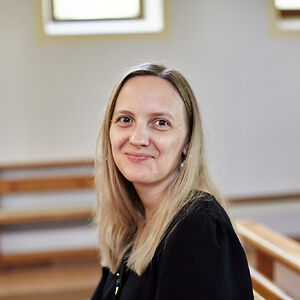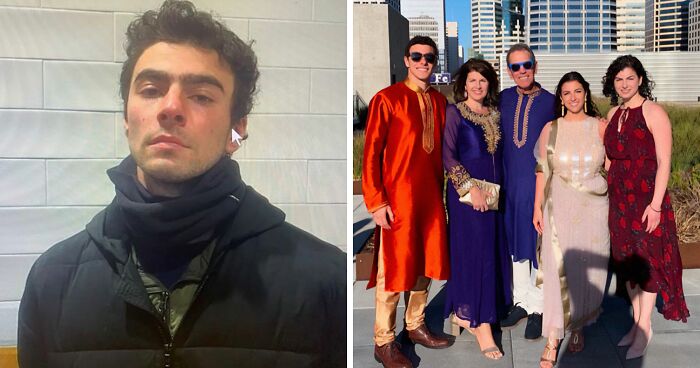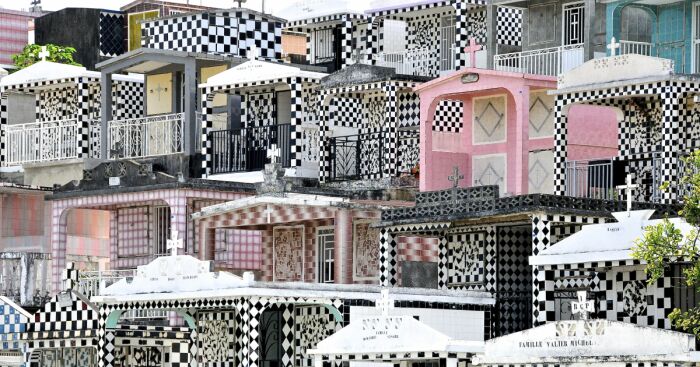
1Kviews
I Made A Compilation Of Amazing And Peculiar Cemeteries Of The World (29 Pics)
This is a compilation of images of some peculiar cemeteries around the world. I decided to make this compilation to see beyond the style of Victorian cemeteries. A cemetery reveals the thought of society around life and death, so knowing its varied and different forms goes beyond just a tourist element. The aesthetics of cemeteries can be very striking for many as a way of deciding where to spend eternity.
This post may include affiliate links.
Mosfellsbæjarkirkjugarður (Iceland)
As Yule approaches, the people of Reykjavik show respect to their deceased by decorating graves with candles and lights, to tell the dead that they are remembered. This traditional lighting is very common around Christmas and New Year.
Neptune Memorial Reef (USA)
It is a columbarium designed by the artist Kim Brandell located on the coast of Florida. This artificial reef protects the ashes of the deceased with small plates that show their name and to deposit and visit them it is necessary to dive.
Sagada Xuán Guān (Philippines)
Although it is a custom that is practiced in China and Indonesia; The Philippines is the most visited place to learn about hanging coffins. This ancestral tradition consists of burying the dead in a fetal position inside a coffin that the dead man carved while alive. It is only reserved for important members of the community and only one woman is known to be buried in this honorable way.
Okuno-In (Japan)
Called the most beautiful mystical cemetery in the world, it is a site surrounded by cedars that has 120 temples. The monk Kukai chose Mount Koya to found one of the main schools of Japanese Buddhism in the year 819. While meditating he reached Nirvana and tradition dictates that he continues to meditate in his mausoleum.
Maqbaratoshoara (Iran)
Since medieval times this cemetery was used to bury poets and mystics from Tabriz. The first was the Persian Asadi Tusi in 1072. In 1970 it was renovated and continues to be the resting place of famous calligraphy and poetry figures.
Jardines Del Humaya (Mexico)
Also known as the pantheon of drug traffickers, it is the place where drug lords are known to bury their relatives in eccentric mansions. Some have television, air conditioning and all kinds of expensive amenities.
Panteón De San Antonio Tecómitl (Mexico)
At this site the tombs are made of mud and remain inert for most of the year; but on the day of the dead, relatives come and sculpt shrouds, castles, offerings, and all kinds of figures decorated with flowers to honor the dead. At night a great party takes place and they eat with the dead.
Cementerio De Atacama (Chile)
Here rest the dreams of those who went to the Atacama desert in search of prosperity around 1900. The arid climate of the place has given the wooden tombs a gloomy appearance.
Nghĩa Trang An Bắng (Vietnam)
Colloquially known as the city of ghosts, this site is decorated in the most extravagant traditional way of Vietnam in memory of its imperial times.
Noraduz Gerezmanatun (Armenia)
This medieval cemetery houses a type of tomb called khachkars (cross-stones), which are sculpted stones with crosses in the center. It is one of the most complete as many of the traditional Armenian tombs were destroyed by the Soviets and the Azerbaijani government.
Cimetière De Morne-À-L'eau (France)
Created to bury exclusively the inhabitants of Guadeloupe, it is a tradition to cover the tombs with black and white mosaics. Although it is unknown how the tradition was born, many associate it with the symbolism of life and death.
Cimitirul Vesel (Rumania)
The Cimitirul Vesel (Merry Cementery) is famous thanks to the local sculptor Stan Ioan Pătraș, who in 1935 carved the first grave using the traditional art of the region. Since then each tomb bears a carved wooden image of its host and a (sometimes humorous) poem about their lives.
Jardin D'afrique (Tunez)
The disasters of colonialism, famine, and wars have made the Mediterranean Sea a place of transit for those seeking a better life, but many do not make it and die at sea (their bodies were later thrown into landfills). In 2021, Rachid Koraichi opened with the help of his daughter, a cemetery for those who remained anonymous. The idea is that it is a garden with trees and vegetation that reminds the unit. Thanks to this initiative, some bodies have been able to be recognized.
Burial Spirit Houses (USA)
This cemetery located in Alaska is the result of the mixture of two funeral traditions: the native descendant of the Danaina and the Orthodox of the Russian missionaries. The current site consists of cremating the remains and leaving them in the open air on a blanket. After 40 days, a house for the spirits is placed on the blanket that, once finished, must also be left to its fate as a memory of time and the ephemeral nature of life.
New Lucky Restaurant (India)
A cemetery with 16th-century tombs was bought by Krishnan Kutti to find a vegetarian restaurant, however, he decided to keep the tombs as part of the decoration. Since then it has been one of the favorite spots for lovers of necrotourism who say "the name fits perfectly".
Catacombe Dei Cappuccini Di Palermo (Italy)
The discoveries of a mummification process caused the catacombs for the Capuchin brothers of Palermo to become a site demanded by the inhabitants to be buried there so that their remains could be kept mummified. Being buried inside is a sign of social prestige among Sicilians.
Campbell River Cementery (Canada)
Since the mid-19th century, this seaside site has been the burial ground for Canada's First Nations. Thanks to the resistance of its inhabitants, the site has been able to keep the memory of the inhabitants.
Cimetière Des Chiens (France)
The dog cemetery in Paris dates back to 1899 and has been a beautiful garden dedicated to deceased pets ever since. It is not only worth visiting for its funerary monuments but also for its guests such as the famous Rintintin. It is known that the pets of Alexandre Dumas and Camille Saint-Saëns were buried here.
Khalid Nabi (Iran)
Discovered between 1979 and 1980, the tombstones in this curious 17th-century cemetery are believed to represent human sexual organs. The place, in addition to being touristic, is frequented by Iranians to make welfare requests by hanging ribbons on the nearby trees.
Nokhur (Turkmenistan)
The inhabitants of the Nokhur region admire goats for their strength and courage. That is why they hang their horns at the entrances of the houses and on the tombs of the cemetery as a sign of respect for their ancestors. An ancient tradition that has been preserved since the time of Alexander the Great.
Forest Lawn (USA)
Considered an authentic American creation and "the Disneyland" of cemeteries, Forest Lawn cemeteries (6 in total) in the USA began their history in 1906 with the one located in Glendale, California. It has an art museum (which includes the world's largest religious painting and replicas of Michelangelo and Da Vinci) and a large mausoleum that attracts star hunters. Guest list includes Bette Davies, Clark Gable, Humphrey Bogart, Michael Jackson, Errol Flyn, Nat King Cole and Walt Disney.
Starý Židovský Hřbitov (Czech Republic)
The old Jewish cemetery in Prague functioned around 1439 to 1789. It has been part of myths and legends as well as being a vital part of the life of the Jews in the Baroque era. Jewish tradition dictates that the tombs could not be destroyed or transported to another place, so the place was small and the tombstones were placed next to others.
Zawiyyet Al-Mayyiteen (Egypt)
Popularly known as the City of the Dead, it is believed to have been founded in the year 642. The necropolis is spread out on the side of an early Third Dynasty pyramid and consists of hundreds of clay mausoleums. Some have been illegally converted into houses to solve the problem of overpopulation.
Memorial Necrópole Ecumênica (Brasil)
Named the tallest cemetery in the world, this 14-story building built in the 1980s pioneered vertical cemeteries. For this reason (and because you can see the Vila Belmiro stadium from above) it was chosen by Pelé as his resting place. As strange as it may seem, the place has a museum of historical vehicles to demystify the visit to a traditional cemetery and relax the tension in the environment.
Gejig (Kenya)
Known in the west as Lothagam North Pillar, it is one of the oldest in the world dating back 5,000 years. It is known that the nomadic peoples of Africa performed a pastoral ritual sacrifice there before burying their dead with vividly colored necklaces and ornaments one meter deep. The site is surrounded with megaliths and stones forming circles. These shelter the remains of approximately 580 people.
Gatore Ki Chhatriya (India)
Desde 1733, este sitio es el crematorio real de los Maharajas de Jaipur. El cementerio está rodeado de fastuosos monumentos esculpidos con escenas de la naturaleza que representan a cada gobernante en turno.
Cementerio De Chauchilla (Perú)
This necropolis from times before the Incas stands out in its peculiarity for being burials in the open air. The tombs that prepared the ancient inhabitants for their transition to another spiritual level, extend over 2 kilometers. Many had lavish trousseaus and offerings, but most were looted.
Shuan Long Shuan (Singapore)
The site is a mix between modernity and the traditional world of pre-war Singapore. That is why it has an ancestral temple and modern mosaic tombs in the style of the sixties modernity.
Wadi-Al-Salaam (Irak)
Wadi-al-Salaam (Valley of Peace) is known to be the largest cemetery in the world with more than 6 million deceased.
I learned so much with these beautiful pictures. I have been taking photographs of cemeteries since I started to travel, and realized not everybody gets buried in traditional cemeteries or cremated. When I first saw the tiny little houses in British Columbia and Mexico I was so taken with them. I find the different ways we celebrate death to be fascinating.
I learned so much with these beautiful pictures. I have been taking photographs of cemeteries since I started to travel, and realized not everybody gets buried in traditional cemeteries or cremated. When I first saw the tiny little houses in British Columbia and Mexico I was so taken with them. I find the different ways we celebrate death to be fascinating.

 Dark Mode
Dark Mode 

 No fees, cancel anytime
No fees, cancel anytime 


